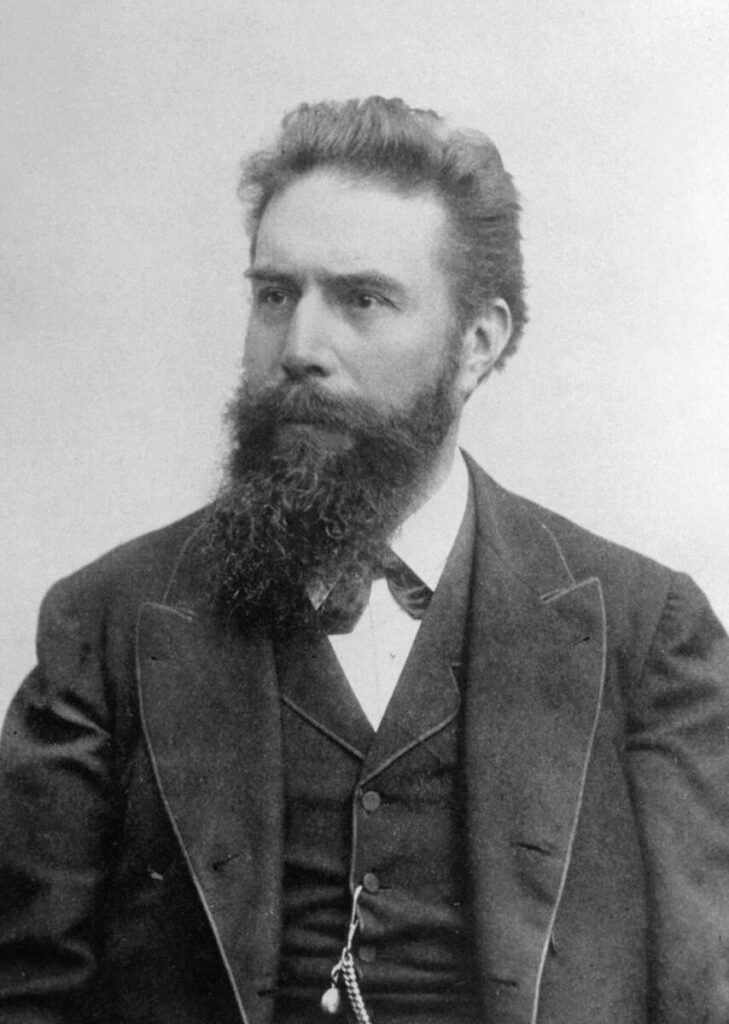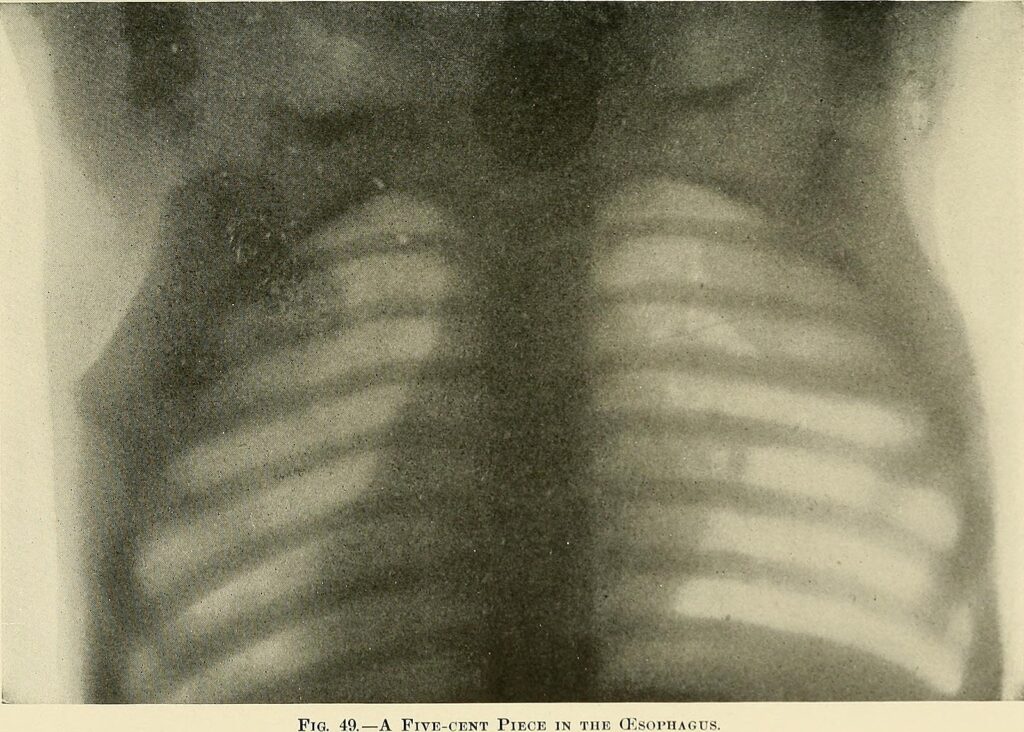Wilhelm Conrad Röntgen was the first person to be awarded the Nobel Prize in Physics.
He discovered the radiation wavelength range known in English as X-rays. In many languages, these wavelengths are still called Röntgen radiation.

Wilhelm Conrad Röntgen
Röntgen was the child of a German cloth merchant. He was born in 1845 in the Kingdom of Prussia and raised in the Netherlands.
At the age of twenty, he was expelled from Utrecht Technical School for drawing a caricature of one of his teachers, though he insisted that it had been drawn by another student. This made it impossible for him to attend university in the Netherlands.
He passed the entrance exam for the Federal Polytechnic Institute in Switzerland and moved there to study mechanical engineering. He went on to earn his PhD at the University of Zurich.
From there, Röntgen moved to France and worked as a lecturer at the University of Strasbourg. Following Strasbourg, he taught at several universities in Germany.
He accepted a position at the University of Columbia in the United States after he was awarded the Nobel Prize in Physics. But the start of the Great War foiled his plans and he remained in Germany for the rest of his life.
Röntgen Radiation
In the course of his research in 1895, Röntgen worked to learn more about a new type of radiant energy. This energy passed through solid objects and generated a mysterious glow.
Other scientists detected this type of radiation over one hundred years earlier. But they were never able to use it to create images. Nicola Tesla was working with X-rays at the same time as Röntgen. He developed his own method of creating images shortly after Röntgen did.
Röntgen wrote the first scientific paper on X-rays in December of 1895. He was the one to use the letter X to represent this unknown wavelength. It is used the same way that X is used in mathematical equations to represent an unknown variable.
Shortly after writing that first paper, he created an X-ray image of his wife’s hand – the first ever X-ray image used to photograph human bones.
“I have seen my death,” Bertha Röntgen said when she first saw the image.
This new discovery caused a sensation in the scientific community. Over one thousand articles were written about X-rays in 1896.

The Nobel Prize in Physics
Alfred Nobel died in 1896. His will bequeathed his wealth to be given to people who had best-served mankind in the fields of physics, chemistry, medicine, literature, and peace.
Röntgen was awarded the first Nobel Prize in Physics in 1901 “in recognition of the extraordinary services he has rendered by the discovery of the remarkable rays subsequently named after him.”
Though he was not a wealthy man, Röntgen donated his prize of fifty thousand krona to the university for further research.
To this day, the Nobel Prize in Physics remains the most prestigious award that physicists can earn.
Radiology Around the World
Röntgen never attempted to patent the X-ray or any of his other discoveries; he believed that they should be available to all.
He wrote to physicians across Europe immediately after creating his first X-ray image because the potential value to the medical community was obvious.
Within a month of Röntgen’s discovery, dozens of scientists throughout Europe and North America were working to reproduce his results.
Alan Archibald Campbell-Swinton, an electrical engineer in Scotland, was the first person after Röntgen to create an X-ray image. His was also of a hand.
The English medical doctor John Hall-Edwards was the first person to use X-rays for medical purposes. He created an X-ray image of a needle stuck in a man’s hand in January of 1896.
The following month, he used X-ray images to prepare for a surgical operation. He also was the first person to take an X-ray of a human spine.
In the early years, when X-rays were a new sensation and the dangers were not yet known, they were offered at fairs and in shoe stores as an enticing novelty.

The Dangers of X-rays
Shortly after X-rays were popularized, the Georgian scientist Ivan Romanovich Tarkhanov used X-rays on frogs and insects. He realized that in addition to creating images, these rays affected the creatures themselves.
In 1896, Thomas Edison invented the Vitascope. This became the first mass-produced device to allow people to view X-rays in real-time. Edison abandoned X-ray research when his associate Clarence Dally developed aggressive and deadly tumors in his hands after extensive imaging.
Around the time of that first documented death caused by X-rays, the physicist Mihajlo Pupin developed a new technology that reduced the exposure time of each image from an hour to a few minutes.
In the same year that Dally was killed by Röntgen radiation, many other scientists documented other worrisome effects such as burns and hair loss. It was also linked to cancer and infertility.
Other Scientists Who Worked With Radiation
Radiographer Elizabeth Fleischman worked extensively with X-rays and eventually realized that the damage she was experiencing, such as burns on her hands, was from the radiation itself. She continued to work with X-rays while advocating for the use of protective screens made of glass and metal.
Cancer worked its way up Fleischman’s arms and into her lungs, and she died in 1905. She was 38 years old. Her gravestone reads, “I think I did some good in this world.”
Marie and Pierre Curie were awarded the Nobel Prize in Physics in 1903 for their theory of radioactivity. Despite mounting evidence of the dangers of working with radiation, Marie Curie continued her work for decades after her husband’s death in 1906.
Curie invented mobile radiography machines for use in field hospitals during the Great War and became the director of the Red Cross Radiology Service. She died at the age of 66 from aplastic anemia caused by her many years of exposure to radiation.
The books and papers that she handled are still so radioactive that they’re stored in lead boxes and only handled through protective clothing and gloves.

